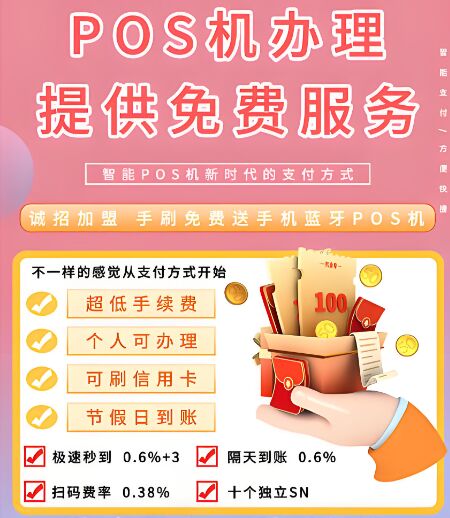线上支付影响pos机(pos机线上和线下支付的区别)
- 作者: 朱颜可
- 来源: 投稿
- 2025-02-08
1、线上支付影响pos机
线上支付对 POS 机的影响
随着科技的飞速发展,线上支付已成为一种新的支付方式。这种方式的兴起对传统 POS 机产生了重大影响。
POS 机面临的挑战和机遇
1. 市场份额下降:线上支付的便利性和安全性吸引了越来越多的用户,导致 POS 机的市场份额不断下降。
2. 功能重叠:过去,POS 机主要用于实体店铺的支付。线上支付平台现在也提供支付网关服务,与 POS 机的功能重叠。
3. 成本缩减:线上支付平台通常比 POS 机供应商收取更低的费用,这使得商家可以节省成本。
4. 新的增长机会:尽管市场份额下降,但 POS 机仍可在特定细分市场保持优势地位,例如酒店业和医疗保健业。
POS 机的应对措施
1. 创新和整合:POS 机供应商正在开发新功能和与线上支付平台整合,以保持竞争力。
2. 增加价值服务:POS 机供应商正在提供附加服务,例如忠诚度计划和库存管理,以增加其产品的价值。
3. 合作和伙伴关系:POS 机供应商正在与线上支付平台合作,以提供无缝的支付体验。
4. 专注于特定行业:POS 机供应商正在专注于特定行业,以保留其市场份额。
线上支付的兴起对 POS 机产生了重大影响,市场份额下降和功能重叠等挑战不可避免。POS 机供应商通过创新、整合和增加价值服务等措施,仍在寻找应对挑战并维持相关性的方法。预计 POS 机将继续在特定行业中发挥重要作用,但其总体市场份额可能会随着线上支付的持续普及而继续下降。
2、pos机线上和线下支付的区别
POS 机线上和线下支付的区别
POS 机(销售点终端)是一种专用于信用卡和借记卡交易的电子设备。它在商业场所中广泛使用,为客户提供便捷安全的支付方式。POS 机可用于线上或线下支付,但两者之间存在一些关键区别。
1. 支付环境
线下支付:POS 机放置在实体店或其他销售场所,客户在店内持卡支付。
线上支付:POS 机集成到在线平台或电子商务网站中,客户在网上购物时远程支付。
2. 支付方式
线下支付:通常使用插入芯片、刷卡或非接触式支付方式。
线上支付:可以使用信用卡号、CVV 码和有效期等信息进行支付,也支持第三方支付服务(例如 PayPal 或 Stripe)。
3. 交易流程
线下支付:客户将卡插入或刷卡,输入 PIN 码或签名,交易完成。
线上支付:客户输入信用卡信息,交易通过支付网关处理,验证支付信息并授权交易。
4. 安全性
线下支付:由于客户在场并验证交易,线下支付通常被认为比线上支付更安全。
线上支付:需要采取额外的安全措施(例如 3D Secure)来防止欺诈,因为客户不在场。
5. 手续费
线下支付:通常由商家承担。
线上支付:手续费可能因支付网关和信用卡公司而异,通常由客户承担或由商家和客户分摊。
6. 便利性
线下支付:对于没有互联网连接或首选亲自支付的客户来说更为方便。
线上支付:对于客户从任何位置远程购物来说更加方便。
POS 机线上和线下支付各有优缺点。线下支付更安全,手续费较低,而线上支付更方便,适合在网上购物。商家应根据其业务需求和客户偏好选择最合适的支付方式。
3、线上支付的优点和缺点英语作文
Advantages and Disadvantages of Online Payments
Online payments have become increasingly popular in recent years, offering a convenient and efficient way to conduct financial transactions. However, it is important to be aware of both the advantages and disadvantages associated with this technology.
Advantages
1. Convenience
Online payments eliminate the need for physical cash or checks, making transactions much easier and faster. Customers can make purchases or send money at any time and from anywhere with an internet connection.
2. Security
Reputable online payment platforms use advanced encryption technologies and fraud detection systems to ensure the security of transactions. This reduces the risk of unauthorized access and fraudulent activities.
3. Speed Efficiency
Online payments are processed almost instantly, removing the delays associated with traditional methods such as bank transfers or mail. This makes it an ideal option for time-sensitive transactions.
4. Flexibility
Online payments offer great flexibility, as customers can choose from various payment methods such as credit cards, debit cards, electronic wallets, and bank transfers. They can also set up recurring payments or automatic withdrawals for recurring expenses.
Disadvantages
1. Transaction Fees
Some online payment platforms charge transaction fees, which can add up over time. These fees can vary depending on the platform, payment method, and amount of the transaction.
2. Security Risks
While online payments are generally secure, there is still a risk of fraud or cybercrime. Hackers can target online payment platforms to steal sensitive information or access unauthorized funds.
3. Lack of Personal Touch
Online payments lack the personal touch associated with traditional in-person transactions. This can make it difficult to resolve disputes or discuss financial matters with a representative.
4. Technical Issues
.jpg)
Online payment systems can occasionally experience technical issues, such as server outages or website errors. This can cause delays or disruptions in transactions.
In conclusion, online payments offer several advantages, including convenience, security, speed, and flexibility. However, it is important to be aware of potential disadvantages such as transaction fees, security risks, lack of personal touch, and technical issues. Before adopting online payments, it is advisable to carefully consider the pros and cons to determine the best option for your specific needs.





.jpg)
.jpg)
.jpg)
.jpg)